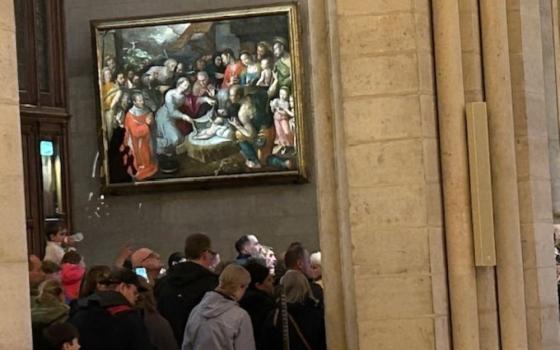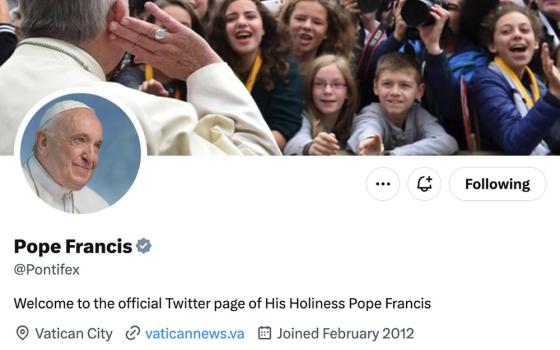Yesterday, I began my review of a new book by Barry Hudock entitled Struggle, Condemnation, Vindication: John Courtney Murray’s Journey toward Vatican II. We left the tale with Murray silenced, his opponents still in power, and Pius XII dying.
Pope John XXIII brought not only a new style to the Vatican, but an openness that was real. The condemnations and silencings of theologians who were perfectly orthodox but not in sync with the theology of Cardinal Ottaviani at the Holy Office, ceased. And, of course, Good Pope John’s decision to call an ecumenical council was itself a breathtaking invitation to reform, as made clear in Gaudet Mater Ecclesia, the pope’s opening address to the Council. Murray was kept out of the proceedings at the first session of Vatican II, but Cardinal Francis Spellman successfully urged his appointment as a peritus before the second session commenced. Murray went to work on the proposed schema for a decree on religious liberty, which was then seen as a chapter in a larger document on ecumenism.
Hudock ably recapitulates the story of the ups-and-downs of the debate on religious liberty at the Council. As in earlier times, the politicking was intense and those opposed to any change in the Church’s most recent teachings on Church-State relations were not opposed to using the levers of power they still possessed to obstruct even any discussion of the topic. Pope Paul VI had to intervene more than once to keep the ball rolling, but roll it did and, in the final days of the Council, Dignitatis Humanae was overwhelmingly adopted by the Council fathers.
This book’s strength is that the reader is introduced to the highly dramatic atmosphere in which Murray lived and wrote. Anyone who thinks the Catholic Ivory Tower is a place of little or no drama is sadly mistaken and this book makes that clear. And, the accessibility of Hudock’s account ensures that a new generation of Catholics in the U.S. will more likely become familiar with Murray’s contribution to Catholic theology, and how that contribution overcame obstacles of the first order before becoming an accepted development of doctrine.
Still, Hudock’s account leaves some important things unexamined. Most glaringly, he introduces the disagreement the existed among those favoring a decree on religious liberty, but he does not really explain the significance of the disagreement, focusing only on the competing personalities, Murray and Yves Congar. He writes:
Murray favored a political-historical argument for religious freedom that was more accessible to unbelievers and relevant to the work of lawmaking in the modern world. Among European bishops and theologians (Yves Congar, for example) there was a preference for a more scriptural-theology approach. Murray explained privately that the text produced in March [by the Europeans] dialed to “do justice to the political-social argument” and that the Europeans were “over-theologizing” the concept of religious freedom.
Hudock does not cite which scriptural and theological arguments the Europeans wanted. Nor does he explain why the difference of opinion was important – at the time, and even more, subsequently. Murray wanted the Church to embrace the negative conception of liberty, freedom from, that is at the heart of the American constitutional framework. But, the European theologians perceived the difficulty here. A formal freedom was not the contentless, free market of religious ideas Murray claimed it to be, but rested on an ontological prioritization of freedom over truth. As well, the dualism he suggested between the temporal and the spiritual was too absolutized, and while it might work in a country in which the Christian moral framework largely held sway through democratic means, it was ill-equipped to use the power of the State to achieve the common good if that framework atrophied.
Murray was asked about this difference at a colloquium at the University of Notre Dame after the Council concluded its work. He admitted that the document “skated around” the difficulty of whether or not the Church can embrace a negative conception of liberty. But, the ice was thinner than Murray imagined and the skating would not last for long. As we have seen in our own time, and despite his argument to the contrary, an immunity from government coercion can be strengthened or weakened by civil law for which a negative conception of liberty has no answer. That is what the fights over the Religious Freedom Restoration Act are all about. Besides, it may not have been the case that error had no rights, but it was emphatically the case that a Catholic has an obligation to seek the truth. The freedom of conscience that Murray championed could easily become understood as a freedom of whim, and extended to the internal life of the Church where, for obvious reasons, no such right can be absolutized. In the wake of the Council, many did precisely that!
In short, Hudock, who did such a fine job explaining the historical circumstance in which Murray worked vis-à-vis the curialists who had silenced him and against the anti-Catholic bigotry he experienced stateside, does not even consider the most consequential historical circumstance that Murray faced within his own camp, the alternative approach of the Europeans proponents of religious liberty. And, like many who write about religious liberty, and who claim to be champions of Murray, he does not employ Murray’s methodology of seeking in the long history of Catholic theology an explication, a deeper understanding, for the conflict between negative and positive conceptions of liberty. The reader is left wanting more, but there is no more. Perhaps, this could be Hudock’s next book, a book I would eagerly read for I have no doubt his skills are up to the task.
This book brought me back to my days as a grad student when my mentor, Msgr. John Tracy Ellis, regaled us with the story of Murray’s rise and fall and rise again. The two of them were good friends, and so there is a side of me that still wants to be a fan of Murray. But, in the years since, I think the limits of his theological ambitions have made themselves manifest. Perhaps it is best to see Murray as a man of his times, facing a problem that was real, and which also had the benefit of introducing notions about human rights into the moral theology of the Church. The telling of that tale for a new generation is an important contribution and it is now Hudock’s contribution. I commend this book unreservedly but reiterate my plea for more.



